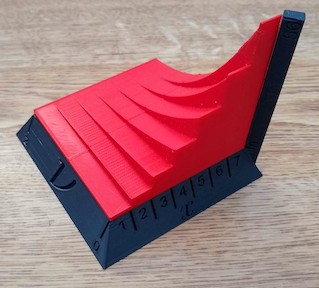Discrete Fractional Difference of Quadratic Function
Written on August 5th, 2019 by Kevin Ahrendt
Description:
This is a three dimensional graph of the discrete function \((x+1)(x)\) defined on the natural numbers. This is an analogue to the quadratic function in the nabla discrete calculus; in particular, this function is known as the rising function. One axis represents the continuous order of the Riemann-Liouville fractional difference ranging from 0 to 2. The \(x\)-axis ranges in discrete steps from 1 to 7. The zeroth order difference, given by \((x+1)(x)\), the first difference, given by \(2x+1\), and the second difference, given by \(2\) are highlighted with a ridge. The Riemann-Liouville fractional difference is continuous with the respect to the order of the difference, so the transition between the zeroth, first, and second difference to the fractional differences in between results in a smooth graph in each discrete x-value.
Design process:
I used Mathematica to generate the graph using the included Mathematica code. Then I used Slic3r to scale the Mathematica output to be \(80\times80\times80\) \(\text{mm}^3\) (as well as let it correct some errors in the stl file). Finally, I used Fusion 360 to design the stand.
Post-print finishing:
If desired, use a few drops of super glue to attach the surface to the stand.
Files
- Continous fractional derivative of the exponential function: Graph_Discrete_Quadratic.stl
- Stand: Graph_Discrete_Quadratic_Stand.stl
- Mathematica Notebook: Graph_Discrete_Quadratic.nb